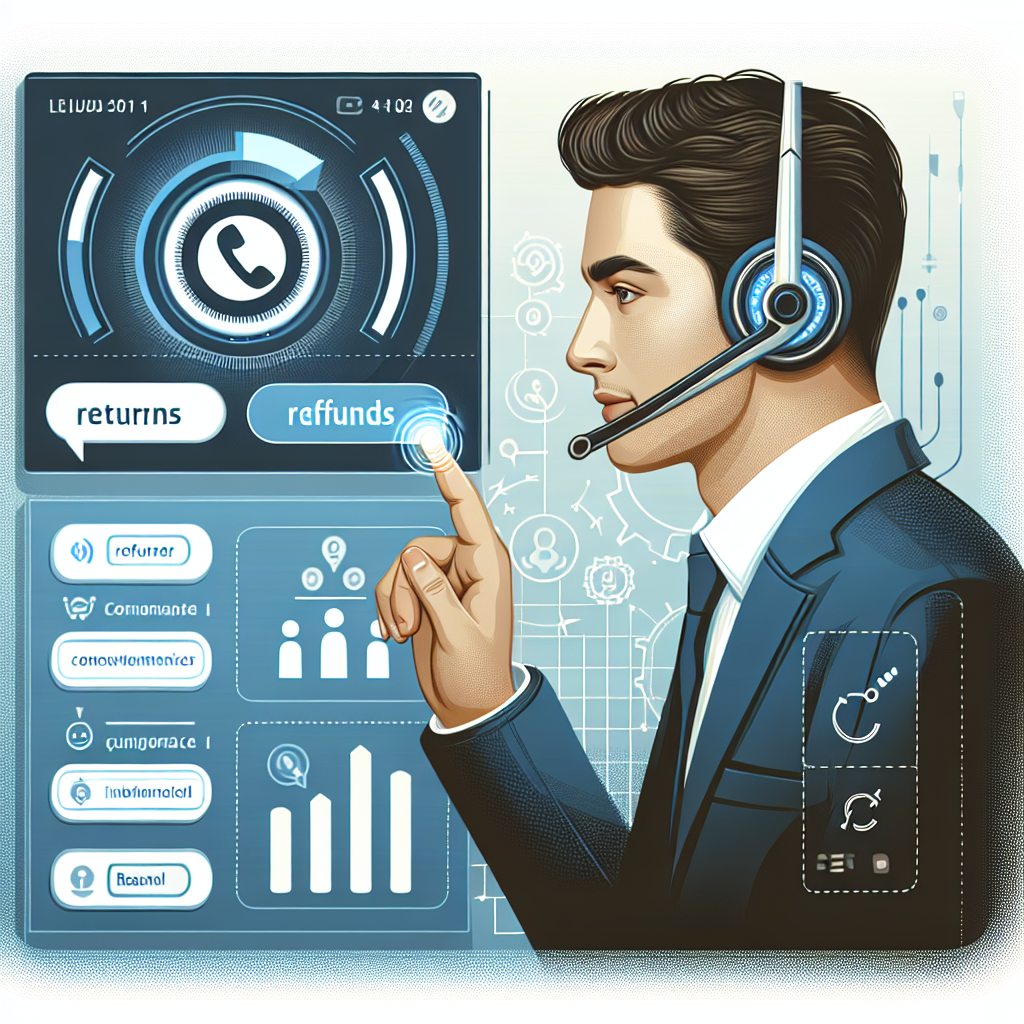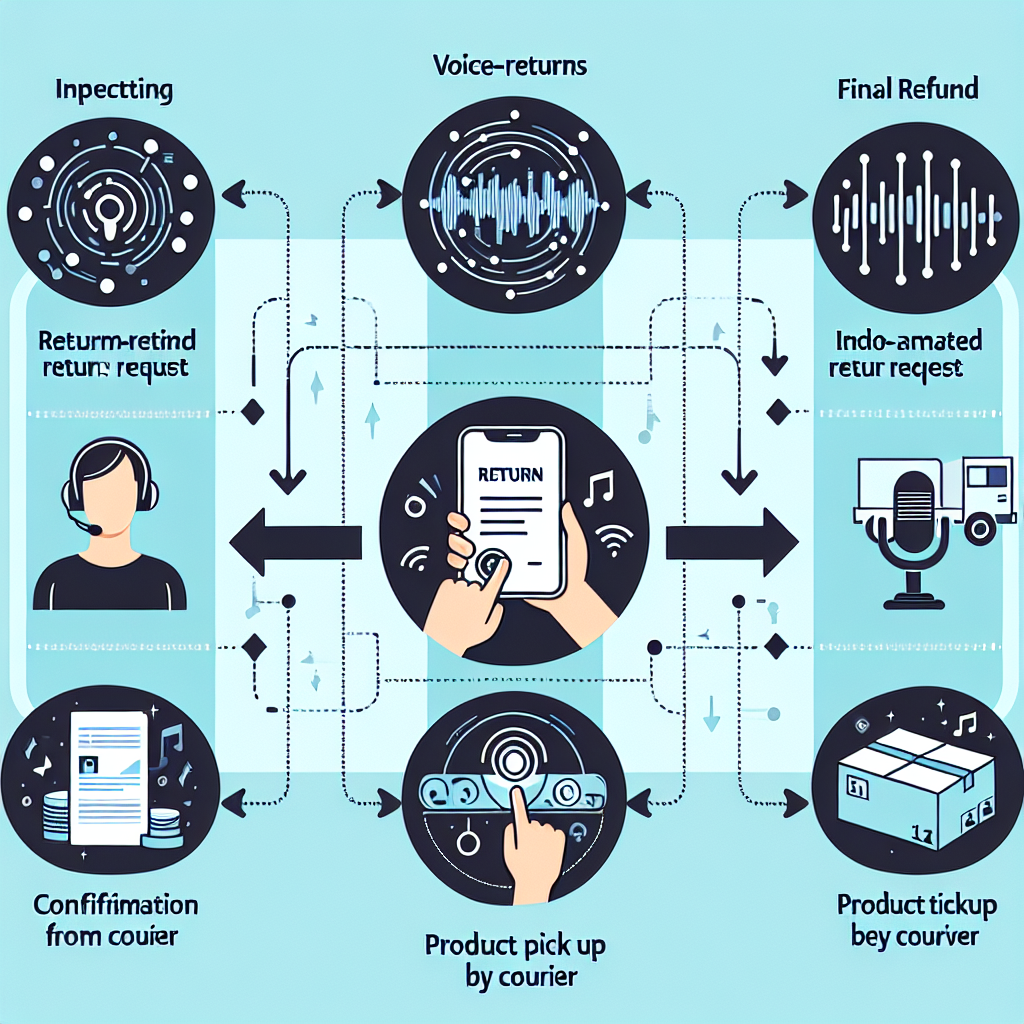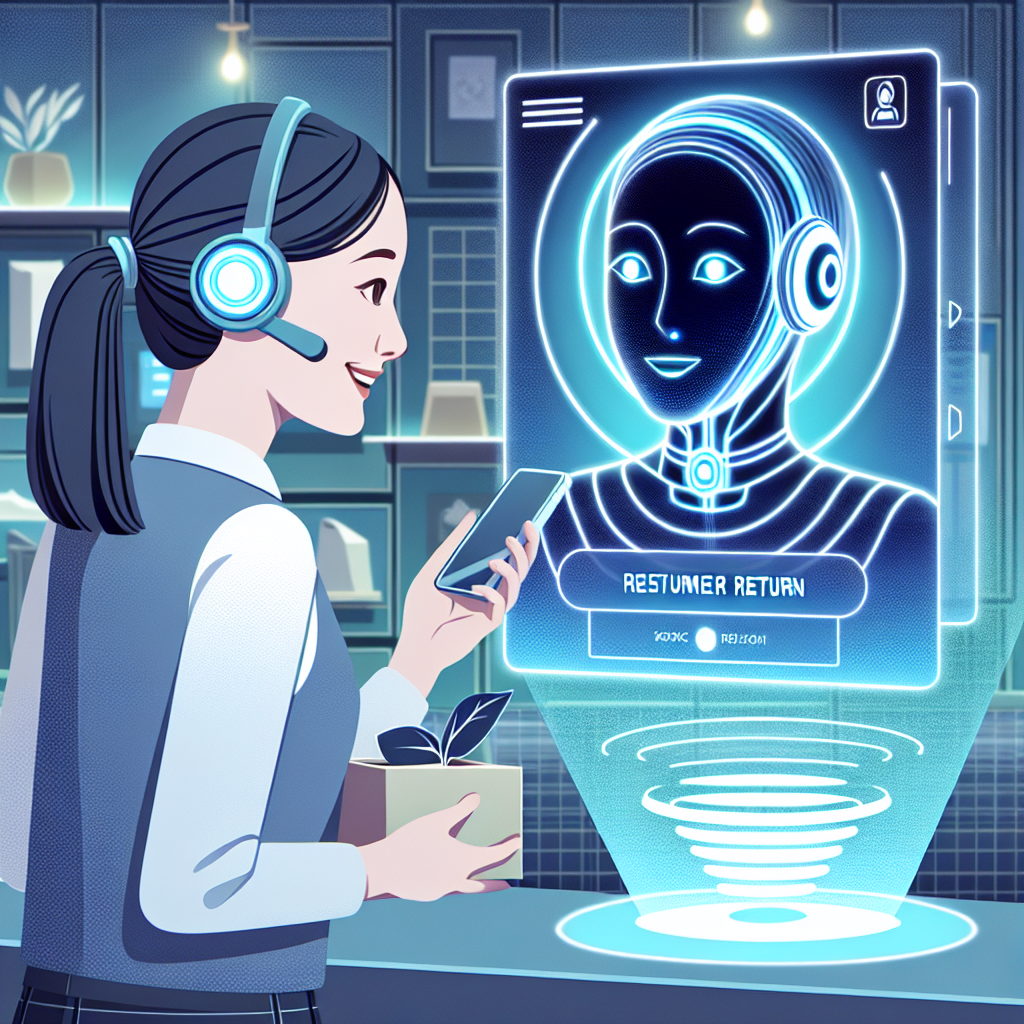
As businesses continually strive to enhance customer experience, they are increasingly adopting voice-activated technologies to streamline various aspects of their operations. One key area where this innovation is making a significant impact is in the handling of returns and refunds.
Voice-activated returns and refunds employ a system where customers can initiate, track, and manage their return requests using voice commands. This eliminates the need for manual input entirely, creating a more efficient and hassle-free process. Furthermore, this technology can be integrated with other systems to provide a more comprehensive solution, such as linking with inventory management software to automatically update stock levels.

For businesses, adopting voice-activated returns brings many benefits. It enhances customer experience by making the process of managing returns and refunds more convenient and faster. Studies have shown that businesses that provide streamlined returns and refunds processes enjoy higher customer retention and loyalty. Moreover, this technology can help businesses save time and reduce costs associated with manually managing returns and refunds.
Equally, customers are also winners in this innovative process. Voice-activated returns and refunds offer consumers a hassle-free way to manage their returns, without needing to navigate complicated online portals or wait on hold with customer service lines. Plus, it offers a high level of accessibility, as it does not require any particular technological skill beyond being able to speak and follow instructions.
In conclusion, introducing voice-activated returns and refunds can greatly streamline phone-based processes. However, businesses need to ensure that they choose the right technology and systems to deliver the best customer experience, while also achieving operational excellence in managing returns and refunds.
Voice-activated processes have been a part of our lives, becoming more embedded with every passing year. These systems are based on two primary technologies, speech recognition and, AI-driven decision making. Both of these work in harmony to deliver smooth user experiences. Amidst this technological revolution, one process that is being streamlined is phone-based returns and refunds operations, moving towards voice-activated returns. But how does it work?
Speech recognition technology is the foundation of any voice-activated system. The moment a command is given, the system begins processing the auditory input. Modern voice recognition systems can account for variations in accent, language, and pronunciation, ensuring a broad usability. IBM
provides an in-depth look at how speech recognition systems have evolved over time.
Once the audio is decoded into text, the AI-driven decision-making process kicks in.
on deep learning platforms provides additional insight into how these algorithms work.
With a voice-activated return process, customers can initiate, manage, and track their returns or refunds by simply talking to the system. They name the product, state the issue, and the AI handles the rest, from updating the database to initiating the return process. This streamlines the entire process, eliminating the need for manual intervention.
By marrying speech recognition and AI-driven decision making, businesses can offer a far superior customer experience. This new era of contactless and hassle-free returns is not just an innovative approach, but a necessity in today's digital age, reshaping the future of customer service.
The advent of voice-activated technologies is continuously transforming various aspects of business processes. One noteworthy area is the returns and refunds process. Voice-Activated Returns and Refunds are emerging as an efficient and innovative method, redefining customer returns experience. By leveraging AI-driven voice technologies, businesses can streamline their phone-based processes, thereby providing superior customer service.
Watson Assistant, a notable AI software, plays a critical role in voice-activated returns by handling customer requests in a conversational manner.

Through automation, businesses can enjoy faster processing times and a reduced rate of human error. With voice-activated tools, customer requests for returns or refunds can be processed almost instantly, avoiding the delay typical of manual processing. Additionally, the implementation of these tools can significantly decrease the risk of human error. Miscommunication between the customer service representative and the customer can often lead to mistakes in the return or refund process. AI-powered voice assistants are less prone to such errors, thereby enhancing the overall returns process.
Moreover, voice-activated returns can amplify the level of customer service and satisfaction. It enables 24/7 customer support, saving customers from waiting on hold or navigating through a complex series of automated messages before reaching a human agent. This way, customers can simply express their issue and have their return or refund request processed efficiently.
In conclusion, voice-activated returns are a forward-thinking solution for businesses aiming to optimise their returns and refunds process. Faster processing times, reduced human errors, and enhanced customer service are tangible benefits that make this approach worthwhile.
The growth of voice-activated technology has brought a new dimension to customer service, particularly in the realm of returns and refunds. As businesses strive to ease product return processes for their customers, integrating voice technology with existing Customer Relationship Management (CRM) and Enterprise Resource Planning (ERP) systems is becoming crucial. This solution not only streamlines operations but also enhances overall customer experience.
CRM software like Salesforce and HubSpot can be equipped with voice-activated technology to handle customer calls without human intervention. This software will be able to understand and interpret the customer's needs, allowing for faster return processing and instant refunds. The ERP systems then act upon this information, updating the inventory and financial records.
To begin implementation, start by developing or integrating voice technology using API's or Natural Language Processing (NLP) service providers such as Google Cloud Speech-to-Text or IBM Watson. This software will enable your CRM and ERP systems to decipher and respond to voice commands.
Subsequently, seamless integration between voice-technology, CRM and ERP systems is crucial. Utilize middleware platforms, such as Oracle Integration Cloud or MuleSoft, to bridge the gap among these systems. This allows the voice technology-enabled CRM system to communicate effectively with the ERP system, ensuring that every customer's return and refund demand is satisfactorily addressed.
Always remember, the purpose of adding voice-activated returns is to optimize your customers' experience by simplifying the return process. Continually monitor and refine your approach to consistently deliver a superior customer experience.
Implementing voice-activated returns can revolutionize the way businesses handle phone-based processes. However, it is not without its trials. By understanding these challenges and cutting-edge solutions, organizations can better prepare for a smooth transition and realize the tremendous benefits.

One key challenge in the transition to voice-activated returns lies in understanding and responding to the vast array of accents, dialects, and speech patterns. This could result in misinterpretations and erroneous processing of returns. However, with modern speech recognition technology, adaptable algorithms learn from a wide range of vocal inputs and continually improve, accurately capturing customer intentions.
Furthermore, upholding data privacy can be a difficult hurdle. Customers' concerns about voice data and personal information security could deter them from utilizing voice-activated processing. Ensuring robust data security measures and clearly communicating these protocols can align with GDPR and build customer trust.
Similarly, coping with technological compatibility can be daunting. Not all customers might have access to the required specifications for voice-activated processing. However, businesses can devise innovative solutions, such as enabling Bluetooth compatibility. This can help bring a wider range of customers into the fold and ensure equal access to services for all.
Overall, while the shift to voice-activated returns may pose its unique issues, the proactive adoption of emerging technologies and flexibility in approach can effectively mitigate these concerns. As companies leverage these solutions, they can reap significant benefits from an efficient, streamlined and innovative returns process.
In the rapidly advancing world of technology, voice-activated services are constantly evolving and present impressive opportunities for streamlining phone-based customer services. Notably, the prospect of voice-activated returns and refunds promises to redefine the efficiency and convenience of customer service interactions.
One notable advancement is the impending integration of artificial intelligence (AI) into voice-activated systems. Through leveraging advanced algorithms, AI could understand and respond to complex customer demands with unmatched efficiency, accuracy, and ease, removing human agent dependency.
Additionally, the growth of multimodal customer engagement platforms promises to revolutionize interaction with customer services. Imagine initiating your refund process on a voice device, continuing it via text-based chat on your mobile phone, and finishing up with an email confirmation. The fusion of voice, text, and visual systems offers the potential to streamline customer experience with unprecedented flexibility and personalized service options.
Furthermore, the advancement of voice biometrics is set to add another layer of security and personalization to voice-activated services. With this technology, customer identities can be verified with just the sound of their voice, eliminating the need for lengthy security procedures and ensuring a fast and secure returns and refunds process.
Lastly, improvements in natural language processing (NLP) will play a pivotal role in enhancing the user-friendliness of voice-activated services. Future NLP advancements are expected to decipher even complex customer commands and dialects with ease, creating a more intuitive and accurate interaction between customers and voice-activated systems.
In conclusion, as these trends materialize, the voice-activated customer service landscape will undoubtedly become more sophisticated, streamlined, and customer-centric, redefining the way businesses handle phone-based return and refund requests. While these advancements are still at various stages of development and application, their potential is remarkable - poised to change not only the customer service industry but also how consumers interact with technology.
Start your free trial for My AI Front Desk today, it takes minutes to setup!








